All three of these are big SUVs,– but there’s a massive difference in exterior dimensions. Note: things are about to get geeky for a few paragraphs.
The Mazda is, it has to be said, huge. It measures 5075mm long (on a 2930mm wheelbase), 1969mm wide and 1747mm tall.
That makes it considerably bigger than the Kia, which is just 4800mm long (on a 2780mm wheelbase), 1890mm wide and 1690mm tall. It’s the city-friendly option, that’s for sure. The Toyota splits the difference, measuring 4890mm long (with a 2790mm wheelbase), 1925mm wide and 1730mm tall.
None of them offer the dimensions - internal or external - of the Nissan Pathfinder, which has a massive cabin area but is also a bit of a barge on the road. By the same token, all three are larger inside than the Hyundai Santa Fe, which is a great all-rounder with plenty of good features but is a little tighter in the third-row than its rivals and lacks third-row airbag protection.
What does all that mean in terms of cabin space?
The Mazda is the roomiest of these three vehicles for adults and kids alike, with easily enough space to squeeze five fully grown bodies on board. It is worth mentioning that the Mazda is the only one of these three with a large transmission tunnel intrusion in the middle of the second row, but the CX-9’s big shortcoming is a lack of third-row air vents - not ideal on a hot day.
-
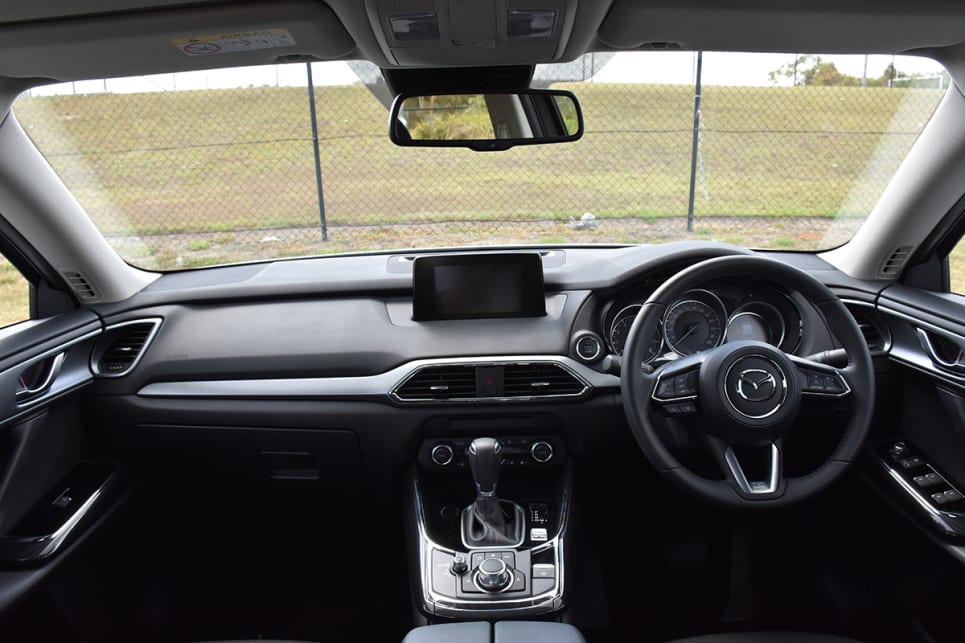 Storage in the CX-9 isn’t as good up front, but it looks the smartest. (image credit: Thomas White)
Storage in the CX-9 isn’t as good up front, but it looks the smartest. (image credit: Thomas White)
-
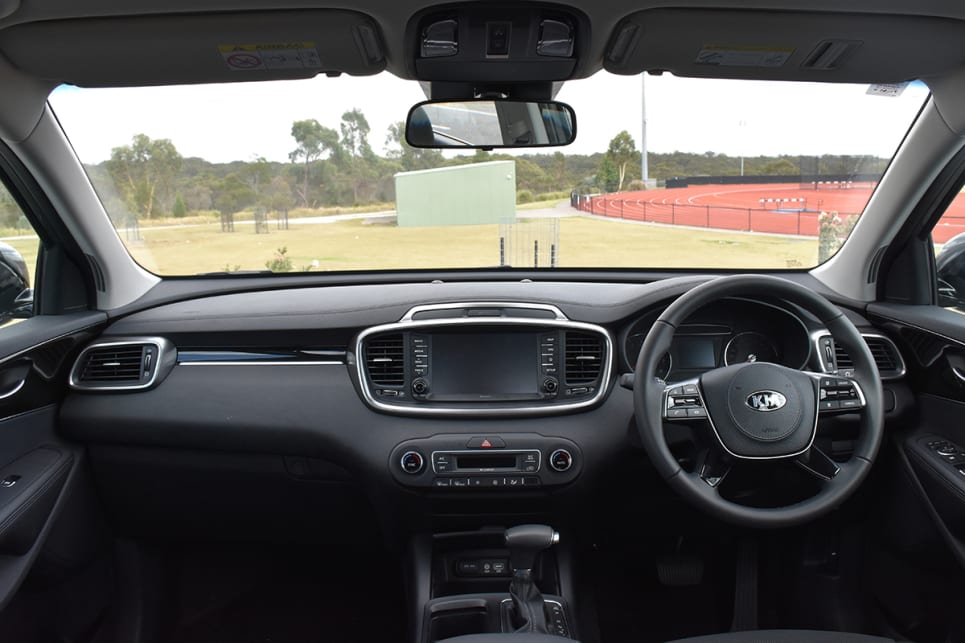 The Kia offers strong storage up front, including a good-sized bin in front of the gear shifter. (image credit: Thomas White)
The Kia offers strong storage up front, including a good-sized bin in front of the gear shifter. (image credit: Thomas White)
-
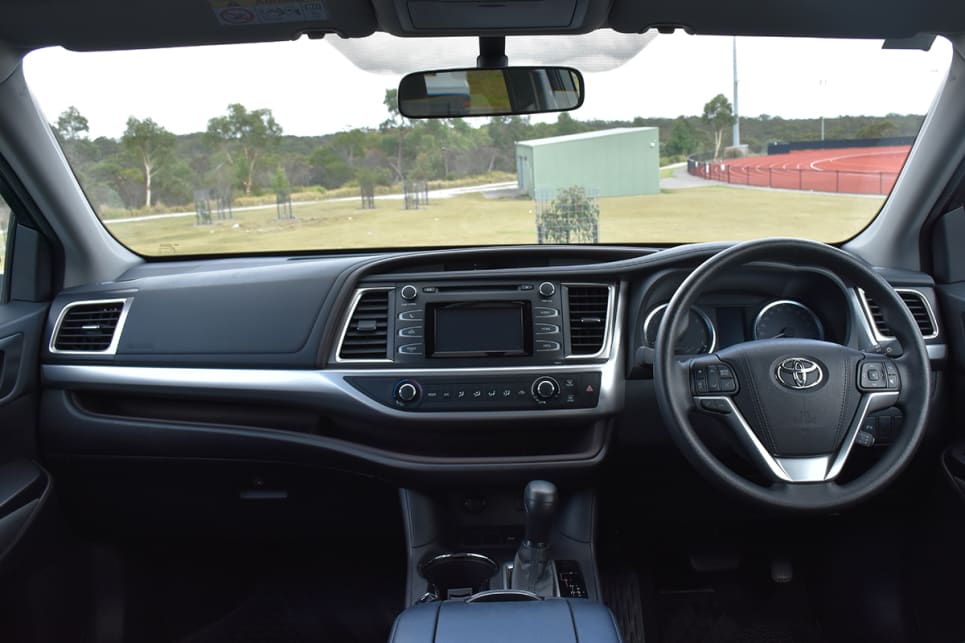 The Toyota feels the most functional up front. (image credit: Thomas White)
The Toyota feels the most functional up front. (image credit: Thomas White)
Next best is the Kia, which is just a touch tighter in the back than the Mazda, which is understandable, because physically it’s so much smaller.
The Toyota has the biggest door apertures of these three, and a good platform for your feet that helps make it simpler to scramble into the back row. But once you’re in there, the knee and toe room is pretty poor, despite reasonable headroom and good visibility (the boxier shape and bigger windows in the third-row are welcome).
If we consider the stated boot capacity of each of these seven-seat SUVs, the Mazda is the decisive victor. The CX-9 has a claimed boot size of 810 litres (all boot measurements are using the VDA method) with five seats up, and that drops to 230L with seven seats in play. But you will need to watch your head on the boot door if you’re tall; the curvaceous design could cause a headache, literally.
The Kia – again, despite its dimensions – manages to be second-best for claimed capacity, with a boot space of 605L with five seats up and 142L with seven in place.
On paper, the Toyota is the worst with five seats in place (529L) but ranks in the middle when it comes to seven-seats-up space (195L). In reality, you’re going to struggle to fit, say, a pram/stroller in the boot if you’re using all three rows, and the usable space is limited in each case. Buy one of those roof pods if you need more room… or, seriously this time, consider a people-mover like the pragmatic Kia Carnival!
-
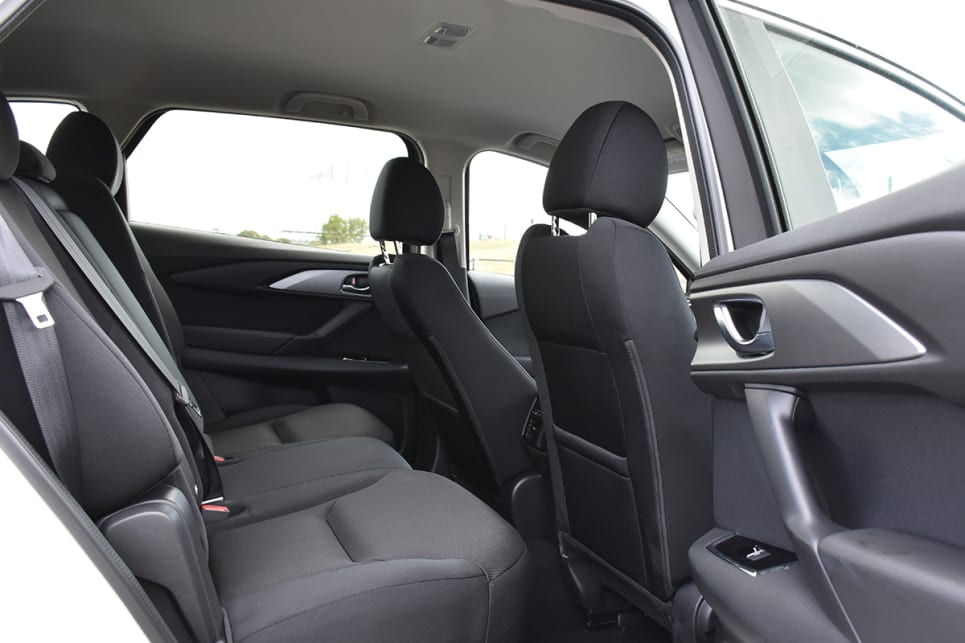 The Mazda is the roomiest of these three vehicles for adults and kids alike. (image credit: Thomas White)
The Mazda is the roomiest of these three vehicles for adults and kids alike. (image credit: Thomas White)
-
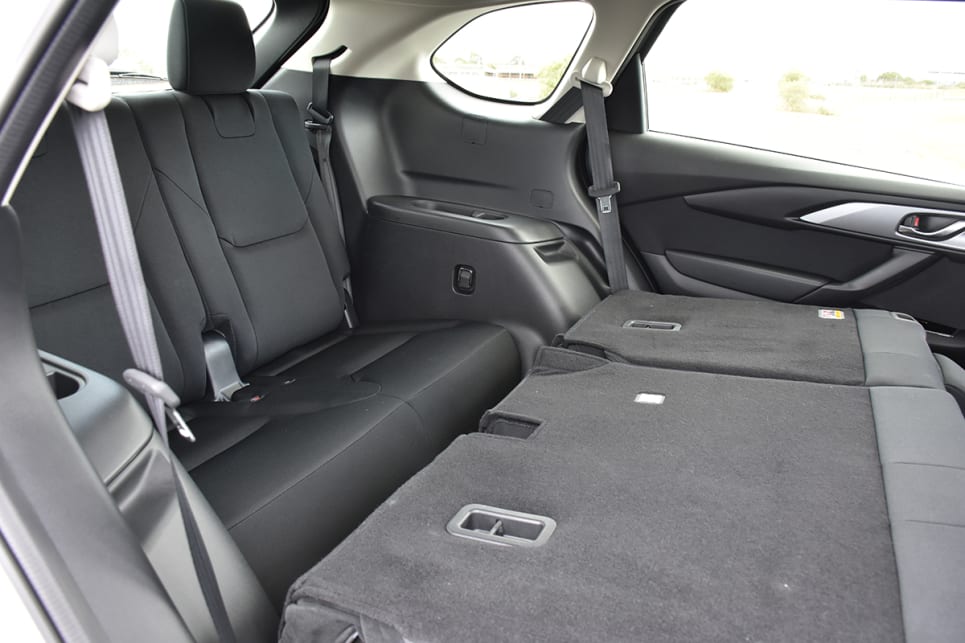 The Mazda is the only one with a transmission tunnel intrusion in the middle of the second row. (image credit: Thomas White)
The Mazda is the only one with a transmission tunnel intrusion in the middle of the second row. (image credit: Thomas White)
-
 The CX-9’s biggest shortcoming is a lack of third-row air vents - not ideal on a hot day. (image credit: Thomas White)
The CX-9’s biggest shortcoming is a lack of third-row air vents - not ideal on a hot day. (image credit: Thomas White)
-
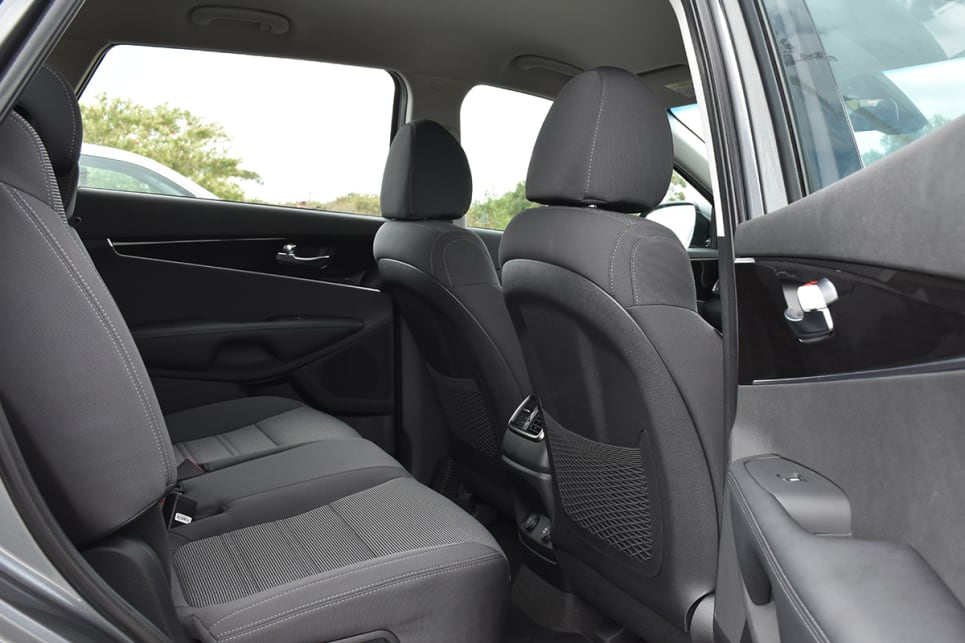 The Kia Sorento is the next best. (image credit: Thomas White)
The Kia Sorento is the next best. (image credit: Thomas White)
-
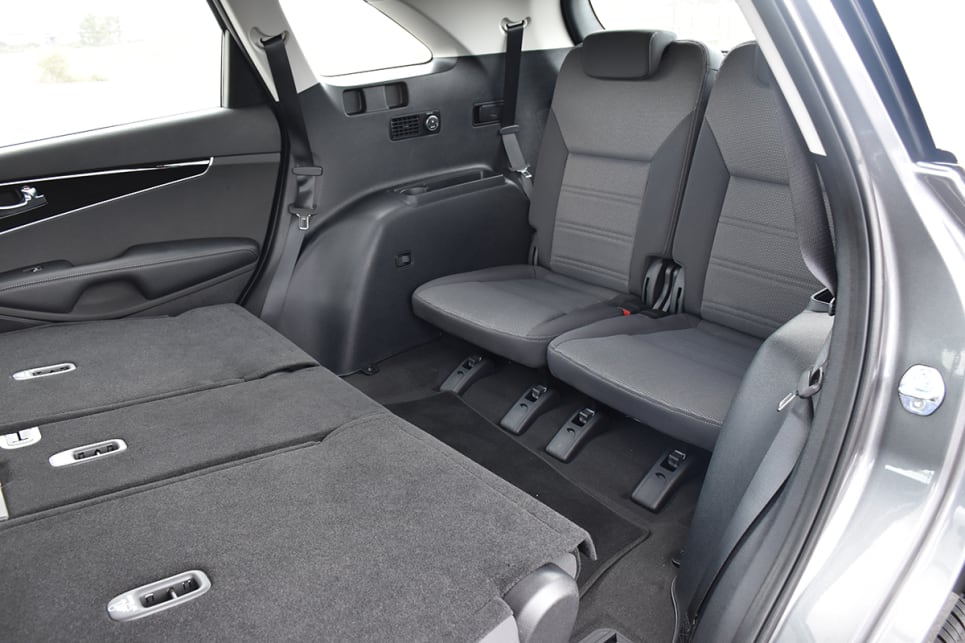 The Kia is just a touch tighter in the back when compared to the Mazda. (image credit: Thomas White)
The Kia is just a touch tighter in the back when compared to the Mazda. (image credit: Thomas White)
-
 The smaller space in the Kia is understandable, due to the car's physically smaller size. (image credit: Thomas White)
The smaller space in the Kia is understandable, due to the car's physically smaller size. (image credit: Thomas White)
-
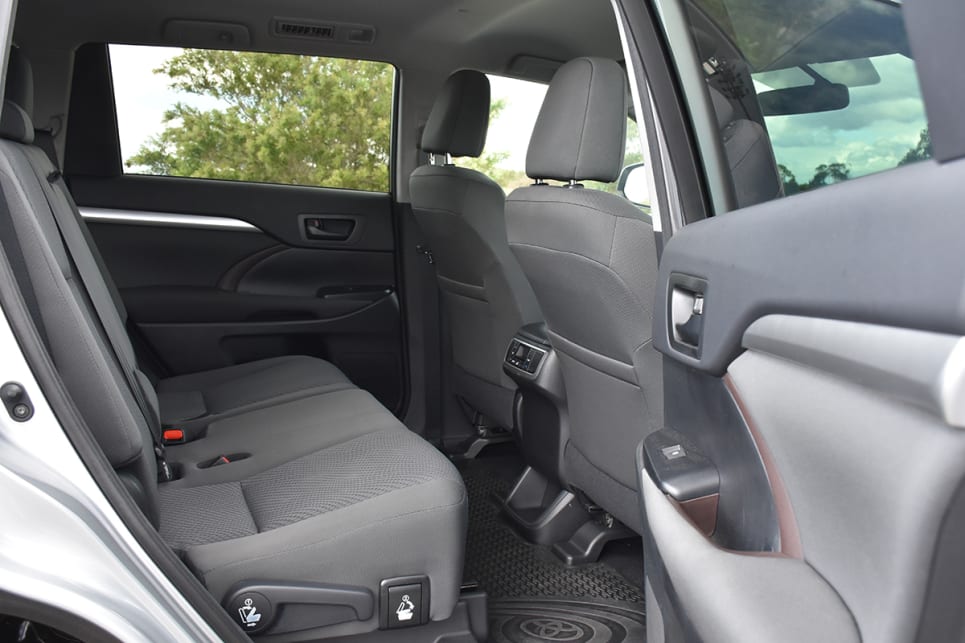 The Toyota has the biggest door apertures of these three. (image credit: Thomas White)
The Toyota has the biggest door apertures of these three. (image credit: Thomas White)
-
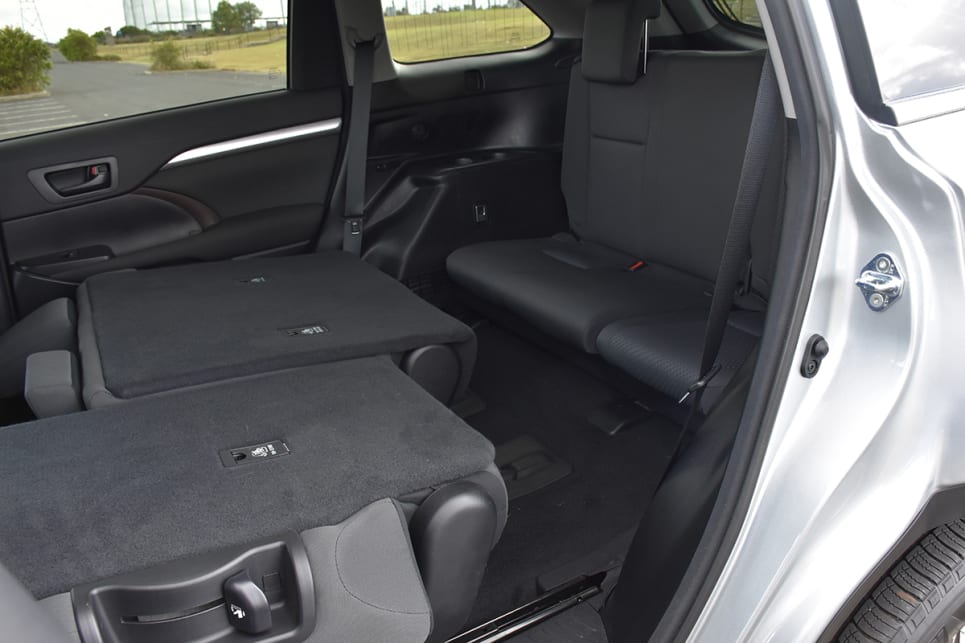 There's a good platform for your feet to make it easier to scramble in the back. (image credit: Thomas White)
There's a good platform for your feet to make it easier to scramble in the back. (image credit: Thomas White)
-
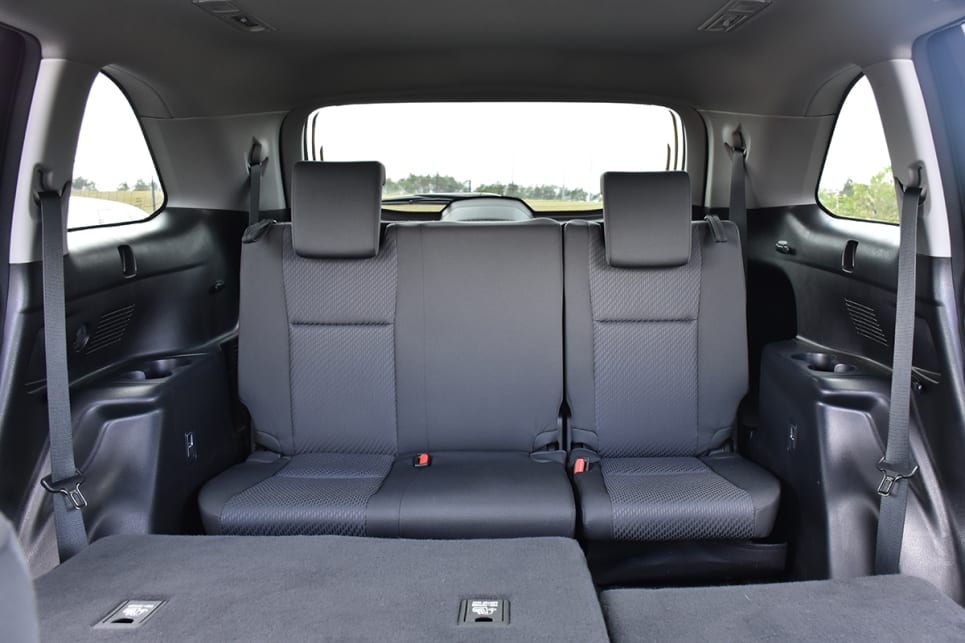 Once you’re in there, the knee and toe room is pretty poor. (image credit: Thomas White)
Once you’re in there, the knee and toe room is pretty poor. (image credit: Thomas White)
As for child-seat anchor points, the Toyota and Kia both have options for the second-row only, with three top-tether and two ISOFIX anchors. The Mazda adds third-row seating options, with an additional two top-tether points (five in total).
The Toyota smashes its competition for cupholder storage, likely because it’s the only US-built car here: it has 12 cup/bottle caddies across its three rows, where the Kia and Mazda have a few less each.
The Toyota feels the most functional up front, with a very handy shelf that runs across the dashboard and includes a clever little port-hole for your phone cables to be stuck through. It also has a massive centre console, but doesn’t have dual-zone climate control - the other two do.
The thing that doesn’t do the Toyota any favours in this company is its fiddly 6.1-inch touchscreen (which doesn’t look that big) media system. It has Bluetooth phone and audio streaming that connects and reconnects reasonably easily (so long as you’re not attempting to initiate a connection at speed) but the menus on-screen can be hard to decipher, and the buttons at the edge make the monitor look even smaller than it is.
The Mazda has a better media system with a very handy rotary dial controller and volume knob between the front seats – the two of which combine to offer a much more intuitive user experience at speed.
-
 The CX-9 has a claimed boot size of 810 litres with five seats up, and that drops to 230L with seven seats in play. (image credit: Thomas White)
The CX-9 has a claimed boot size of 810 litres with five seats up, and that drops to 230L with seven seats in play. (image credit: Thomas White)
-
 The Mazda is huge, measuring in at 5075mm long (on a 2930mm wheelbase), 1969mm wide and 1747mm tall. (image credit: Thomas White)
The Mazda is huge, measuring in at 5075mm long (on a 2930mm wheelbase), 1969mm wide and 1747mm tall. (image credit: Thomas White)
-
 Toyota is the worst with five seats in place (529L) but ranks in the middle when it comes to seven-seats-up space (195L). (image credit: Thomas White)
Toyota is the worst with five seats in place (529L) but ranks in the middle when it comes to seven-seats-up space (195L). (image credit: Thomas White)
-
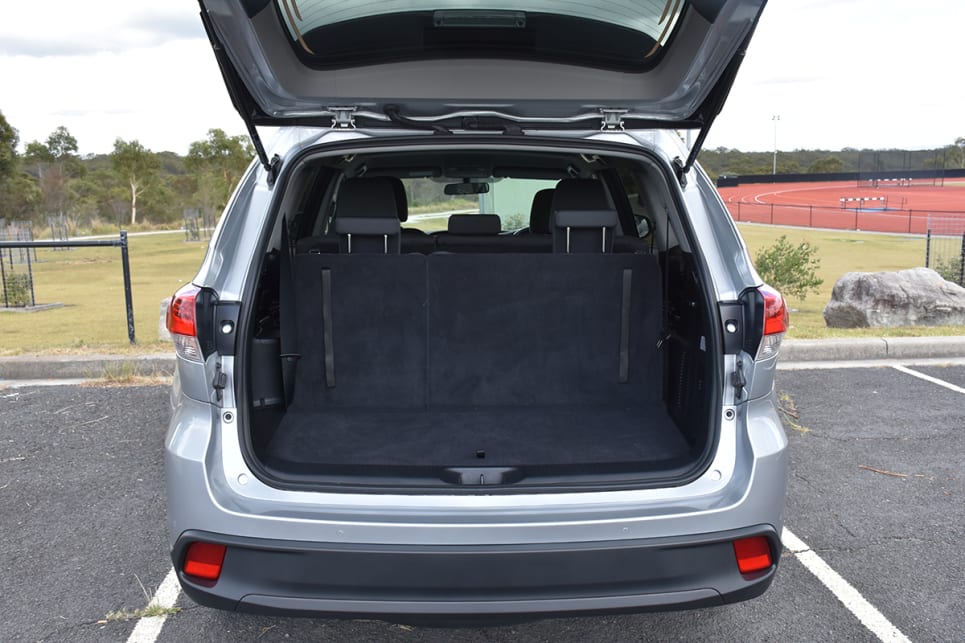 The Toyota is 4890mm long (with a 2790mm wheelbase), 1925mm wide and 1730mm tall. (image credit: Thomas White)
The Toyota is 4890mm long (with a 2790mm wheelbase), 1925mm wide and 1730mm tall. (image credit: Thomas White)
-
 The Kia manages to be second-best for claimed capacity, with a boot space of 605L with five seats up and 142L with seven in place. (image credit: Thomas White)
The Kia manages to be second-best for claimed capacity, with a boot space of 605L with five seats up and 142L with seven in place. (image credit: Thomas White)
-
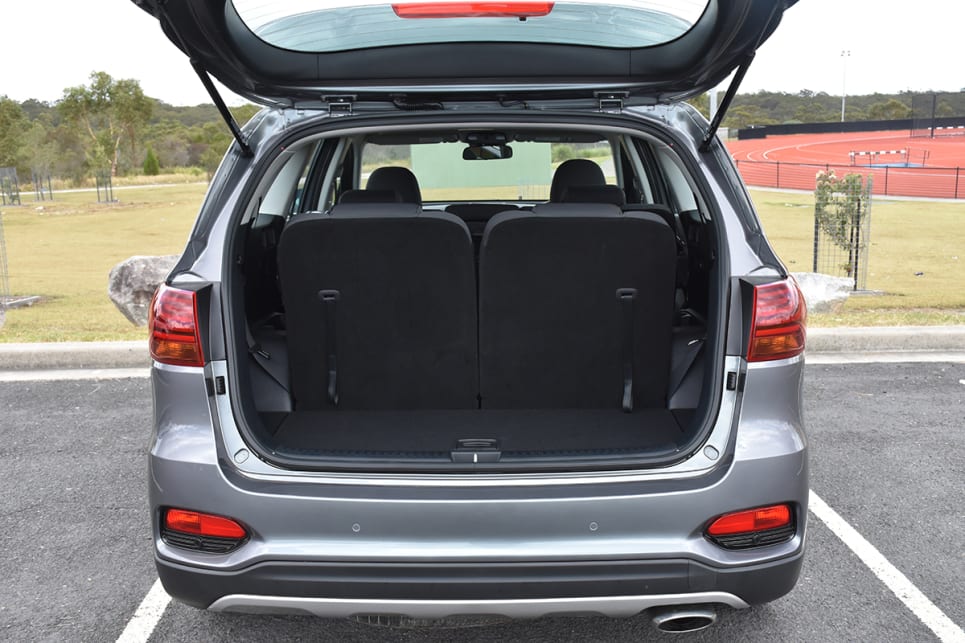 The Kia comes in at 4800mm long (on a 2780mm wheelbase), 1890mm wide and 1690mm tall. (image credit: Thomas White)
The Kia comes in at 4800mm long (on a 2780mm wheelbase), 1890mm wide and 1690mm tall. (image credit: Thomas White)
Still, its screen isn’t overly special – with a 7.0-inch monitor, it is the midpoint here, and not as impressive as other models in the CX-9 range, which have larger displays – and we noticed the MZD Connect system can be slow to load and glitchy with its Bluetooth phone connections (specifically with an iPhone) at times.
Storage in the CX-9 isn’t as good up front as the other two models here, but it looks smarter and more high-end than both of its competitors.
The Kia’s media screen is bigger than the other two - an 8.0-inch unit - and it betters them both with Apple Carplay and Android Auto. It is a reasonably easy system to get used to, but I couldn’t for the life of me figure out how to disable the speed-camera warnings… that could be a blessing in disguise for some, I guess.
The Kia offers strong storage up front, including a good-sized bin in front of the gear-shifter and a decent centre console. And its cabin finishes are smart and stylish – the wraparound section that spans from the front doors all the way around the dashboard in an Audi/Jaguar-esque way is particularly pretty. It would be even better if it stood out more amongst the mass of black plastics on the Si show.
| | Mazda CX-9 Sport | Kia Sorento Si | Toyota Kluger GX |
| Score: | 8 | 8 | 7 |








































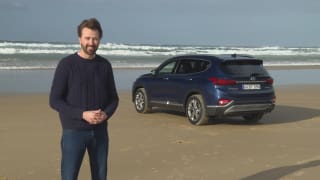






 Haval Jolion
Haval Jolion